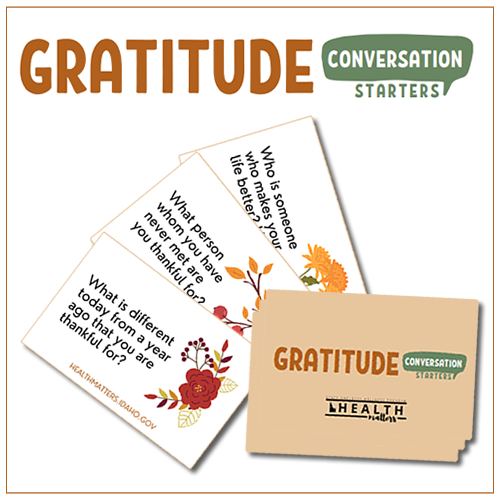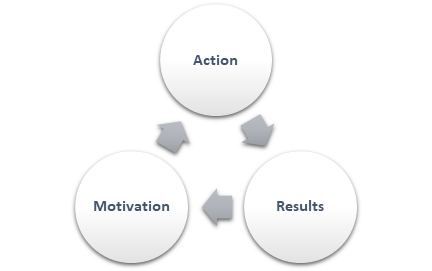Category: Monthly Matters
Well-Being Refresh

Refresh in January
A new year can bring new energy to refresh your well-being! The truth is we don’t need a new year to make positive changes, but sometimes the fresh start can be what it takes to get us started. If you’re thinking about making some changes this year, be sure to think small. It is common to get carried away with a grand new year’s resolution, but habit-building science confirms that small, consistent changes lead to better outcomes.
Here are six small and simple ways you can refresh your well-being in the new year!

Reflect: Take some time to look back on the past year. What went well? What was challenging? What kinds of things do you want to do again? What types of things do you want to avoid, if possible? Looking back on where you’ve been can help you determine where you want to go. Use your reflection of 2021 to help you establish and define your intention for 2022.
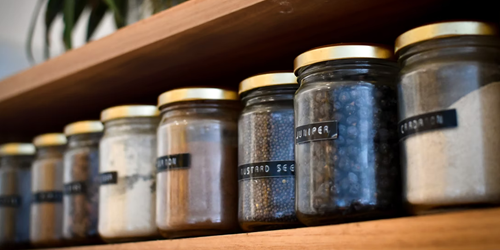
Clean Your Physical Environment: Start the new year with a clean and organized space, whether that’s at work, at home, or both! Think about your goals and intentions for the upcoming year and determine which areas could use a little tidying. Maybe you want to clean out your kitchen pantry or purge your clothes closet, or finally tackle that old filing cabinet. You don’t have to do it all at once, but start somewhere and do one space at a time…even if that means you won’t be done until next January.

Clean Your Digital Environment: Don’t let technological noise take up precious space in your brain and life. Use the new year as an opportunity to unfollow and unsubscribe from digital content that is no longer serving you. If you’re feeling bold, you may delete some apps altogether!
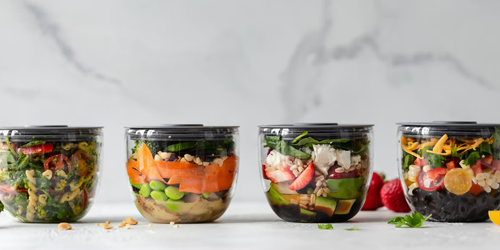
Update Your Routine: Routines can help you manage change, stick with healthier habits, and reduce overall stress. If you’ve noticed yourself out of your regular morning or evening routine (or you’ve never had a routine), now is the time to get on track. Think of a few things that make you feel your best, and try incorporating them into a simple routine. Perhaps that means getting up 20 minutes early to read or journal before the rest of your family wakes. Or maybe you’ll start putting on your walking shoes as soon as you get home so you can take the dog for an evening walk. It could even be setting aside time on Sunday afternoons to grocery shop and meal prep for the week ahead. Keep track of how many days or weeks in a row you can maintain your routine to add extra motivation.
Goal Setting
Resolutions are easy to make but hard to follow through with. This is because most resolutions (I want to get healthy. I want to lose weight. I want to be more organized. I want to save more money.) are too vague and do not incorporate concrete actions. On the other hand, effectively developed goals are specific, finite, and help you stay focused on your desired outcome.
- You can set a goal for almost anything! Whether you are training for a race, trying to eat more vegetables, or saving for a big purchase, making your goals SMART sets you up for success!
- Be purposeful in your goal setting. Choose a small number of objectives that are the most important to you. A goal should include a metric that lets you know you have accomplished it.
- It is easier to stick to a new behavior with a supportive network. Accountability can be motivating and is critical for success. Tell friends, family, and co-workers about your goals and ask them for support.
Happy, Healthy Holidays

Make the holidays merry and bright by prioritizing your well-being! Use the following tips, ideas, and strategies to keep you and your loved ones healthy this holiday season.

Keep it Simple
One of the fastest ways to holiday burnout is to set high, unrealistic expectations for yourself. Make your plans simple and your activities doable.

Create a Holiday ‘Bucket List’
Create a ‘bucket list’ of fun, realistic things to do this holiday season. Ideas might include watching a favorite holiday movie, decorating cookies, donating to charity, looking at Christmas lights, etc.

Pace Yourself
The holiday season lasts for several weeks. Break your holiday preparations into small steps so you can accomplish a little each week. Also, do not forget the first tip and ‘keep it simple’ to prevent holiday burnout.

Reflect on Past Holidays
Think back to moments you have treasured during past holiday seasons, and try to recapture the essence of what made those times special even though it might not be exactly the same.

Look Forward with Optimism
Setting goals challenges us to aim for higher fulfillment and self-improvement. Give yourself something to look forward to next year. Set small, realistic resolutions, and ask others to help you stay accountable.

Talk to Someone Who Cares
If you feel bogged down by a case of the holiday blues, do not suffer through the season. Reach out and talk to someone you trust.
*Source: Tips for Coping with Holiday Stress This Year by ComPsych Guidance Resources
GuidanceResources® is ComPsych’s online access to timely, expert information on thousands of topics, including relationships, work, school, children, wellness, legal, financial and free time. Visit GuidanceResources.com, click the Register tab, and enter your Organization Web ID: SOIEAP.
An Attitude of Gratitude

When life gets challenging, it can be difficult to focus on all the good things we have to be thankful for. Our brains are hardwired to consider the worst possible scenario and remember negative experiences to avoid pain and stay safe in the future. Gratitude is one way to counteract our natural bias towards negativity to boost happiness and overall well-being.
Gratitude Tips
- Take a moment. Think about the positive things that happened during the day.
- Jot it down. Make a habit of writing down things you’re grateful for. Try this 30 day gratitude journal!
- Savor your experiences. Try to notice positive moments as they are happening.
- Relive the good times. Relive positive moments later by thinking about them or sharing them with others.
- Write to someone. Write a letter to someone you feel thankful toward. You don’t have to send it.
- Make a visit. Tell someone you’re grateful for them in person.
Source: https://newsinhealth.nih.gov/2019/03/practicing-gratitude
6 Ways to Put a Spring in Your Step


Cleaning is a proven stress-reliever. Our brains register clutter and messes as sources of stress. Make a list of areas in your home that could benefit from a little spring spruce up (or find a list online to get your started). Tackle one job at a time, cross it off your list and move on to the next one. The added bonus is that cleaning is a great way to get movement in without even realizing it!

Gardening is a fun way to get outside for fresh air and movement. Whether you grow a small pot of herbs or a large backyard garden, the outcome will likely be good for your body and mind! From prepping to planting to watering to harvesting, the process will have you moving every step of the way! Gardening can reduce symptoms of depression and anxiety by helping your mind focus on a goal. It is rewarding to see your plants grow and thrive! When you invest time and energy into growing your own vegetables you are more likely to eat and enjoy them.

Even mild dehydration can impair energy levels and mood and lead to major reductions in memory and brain performance. When you are fully hydrated you can think faster, feel less fatigued, and even have reduced stress! Start carrying a reusable water bottle with you and set a daily water intake goal.

Spring is the perfect time to give your health a tune-up! Do not let your health get pushed to the bottom of your “to do” list. Use the MyHealthFinder tool to see personalized health recommendations and call schedule your annual preventative care appointment today!

Spending time in nature can help relieve stress and anxiety, improve your mood, and boost feelings of happiness. Fresh air and natural sunlight increase relaxation signals in our bodies by lowering blood pressure and decreasing the stress hormone, cortisol. Get outside to rejuvenate your mind and lower your stress. Exposure to natural sunlight gives you a boost of vitamin D, which supports a healthy immune system. Just remember to enjoy the sun without burning.

Unplug to recharge. A growing body of evidence links screen time to increased stress, anxiety, and depression. The benefits of reducing screen time include improved mood, better sleep, and more time for other activities. Determine how much time you spend in front of a screen and identify what is necessary and what could be slimmed down.
Feel-Good Foods
What you put on your plate directly impacts your mental health and overall mood. A diet high in sugar and highly processed foods can lead to inflammation in the body and brain. Among other things, this inflammation can impair decision-making and intensify stress, depression, and anxiety. In order to function effectively, your body and brain require a variety of carbohydrates, proteins, fats, vitamins, and minerals. Give your mental health a boost by incorporating the following foods into your diet.
During times of stress it’s common to eat comfort foods that temporarily soothe and distract us. Salty, greasy, sugary things taste good but don’t offer a lot of nutritional benefits. It’s normal to crave these foods, but when it comes to nutrition and stress, one of the best things you can do for your body and mind is to reach for whole foods like fruits, vegetables, proteins, and whole grains. Treats have their place every now and then, but try adding nutrient-rich foods to your plate more often. Notice if you feel a difference in your mood. Reach for these feel good foods to make your body and your mind feel better!

Fatty Fish
Fatty fish, like wild salmon, tuna, and rainbow trout, are rich in omega-3 fatty acids, which promote brain health and may help manage depression and anxiety.

Nuts & Seeds
Nuts and seeds, like almonds, walnuts, Brazil nuts, and pumpkin seeds, are a great source of magnesium, which has been found to improve sleep quality.

Lean Proteins
Lean proteins, like fish, turkey, chicken, eggs, and beans, help keep serotonin levels balanced and improve overall brain function.

Fresh Fruits
Fresh fruit, like oranges, grapefruit, pineapple, berries, and bell peppers*, are all high in vitamin C, which can lower the stress hormone cortisol and blood pressure during high-stress situations.
*Yes, peppers are botanically a fruit!
Fermented Foods
Fermented foods, like yogurt, kefir, and pickled vegetables, contain probiotics that have been shown to reduce anxiety and stress hormones.
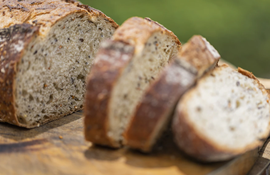
Complex Carbohydrates
Complex carbohydrates, like whole grains (oats and brown rice) and starchy vegetables (potatoes and corn), provide a steady source of energy for your brain.
Valentine’s Recipe Roundup
There is something for everyone in this Valentines recipe roundup! Express your love by making a healthy and delicious meal for someone you care about…or just for yourself, because you deserve it too!

Heart-Shaped Pizza with Bell Peppers / EatingWell.com
family friendly / fun to make

Baked Chicken Parmesan / Tasty.com
healthy comfort food / easy peasy
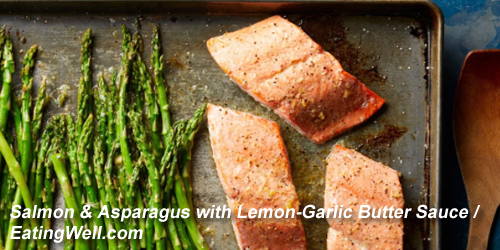
Salmon & Asparagus with Lemon-Garlic Butter Sauce / EatingWell.com
low carb / healthy salmon

Spaghetti with Lemon & Toasted Walnuts / VegetarianTimes.com
meatless / healthy comfort food

Stir-Fried Shiitake Mushrooms with Tofu & Bok Choy / BetterNutrition.com
vegan / takeout fake-out

Kid-Friendly Fondue / SuperHealthyKids.com
family friendly / fun to eat

Mediterranean Beef Pinwheels / IDBeef.org
meat lovers / feels fancy

Easy Shrimp Ceviche with Avocado / TheKitchn.com
low carb / seafood

Thai Beef Salads / MyRecipes.com
meat lovers / takeout fake-out
New Year, New Habits

How to Create Habits That Stick
A new year is a fresh start and a great time to focus on creating (or re-establishing) healthy habits! Use these tips for making your new habits stick.
Anchor Your New Habits
Much of our daily life is taken up by habits that we have formed over our lifetime. Habits can be almost automatic, meaning we do not even recognize that we are doing them. One of the more effective ways to add a new habit to your routine is to anchor it to an existing behavior you consistently do. For most of us brushing our teeth in the morning is a habit we established long ago, and something we rarely give much thought. The habit of brushing your teeth is anchored to the act of waking up in the morning: “Every day after I wake up, I brush my teeth.”
A habit anchor is a simple, yet powerful, tool to help new habits stick.
Example: Follow these three steps to anchor a new habit.
- Make a list of existing habits that you perform every day around the same time. Waking up, going to bed, showering, getting dressed, eating lunch…these are all great examples of things most of us do daily.
- Pick an anchor from your list of options that best corresponds with the little habit you want to add.
- Write down your little habit as a statement along with your anchor:
- “After I turn on the coffee pot in the morning, I will drink an 8 oz glass of water.”
- “After I eat lunch, I will go on a 5-minute walk.”
- “After I buckle my seat belt, I will take three deep breaths.”
- “After I put on my pajamas, I will read 10 pages of my book.”
ARM Yourself for Success
Lack of motivation is one of the most cited barriers to change, this is especially true after the shine of a new year wears off. How do we keep ourselves motivated for weeks, months, and years after we decide to make a change? Contrary to popular believe, action precedes motivation. This means that starting with a small, simple act can lead to feelings of motivation, and ultimately inspire you to keep going.
ARM yourself for change by using the Action-Results-Motivation model. The trick to the ARM method for building habits is to make the initial action small. Make it so small that you have no excuse not to do it.
Starting with a small, consistent action is the key to building momentum, and ultimately, motivation.
Example: If you want to start walking 30 minutes a day, you can begin by creating a habit to take a 5-minute walk after lunch.
- Action: Take a 5-minute walk after lunch.
- Results: I notice that I feel more alert, energized, and ready for my afternoon. I also get a burst of pride when I cross it off as “complete” on my to-do list.
- Motivation: Knowing how I will feel after my 5-minute walk motivates me to keep doing it daily and increase my walking time.
Before you know it, you have incorporated this small walking habit into your routine and are consistently extending your walks until you reach your goal of 30 minutes a day.
Lose the All or Nothing Thinking
When you engage in all or nothing thinking, you assess situations in extreme terms. You think you will either be a total success or a total failure. This is an inaccurate way of thinking because life is not black and white – it’s grey. It is far too easy to get stuck on the notion that if we can’t do something perfectly, it’s not worth doing. That is simply not true! We often find success when we embrace the squishiness that is the middle ground. If your car ran out of gas, would you refuse a partial gallon from an emergency gas can simply because it wouldn’t be enough to fill the entire tank? NO! The same idea applies to behavior change.
Consider all the ways you could work toward your goals, no matter how imperfect the strategies may seem. Something is always better than nothing. Take time to celebrate even the tiniest, most imperfect, success!
Example: Avoid all or nothing thinking by finding success in small ways.
- Maybe you don’t have time for an hour walk…but you can take a 5-minute walk.
- Maybe the only thing in the refrigerator for dinner is leftover pizza…but you can add some broccoli you found in the freezer on the side.
- Maybe you lost your temper at your kids because you are stressed…but you can still apologize and practice some deep breaths together.
Goal Setting
Resolutions are easy to make but hard to follow through with. This is because most resolutions (I want to get healthy. I want to lose weight. I want to be more organized. I want to save more money.) are too vague and do not incorporate concrete actions. Effectively developed goals on the other hand, are specific, finite, and help you stay focused on your desired outcome.
- You can set a goal for almost anything! Whether you are training for a race, trying to eat more vegetables, or saving for a big purchase, making your goals SMART sets you up for success!
- Be purposeful in your goal setting. Choose a small number of objectives that are the most important to you. A goal should include a metric that lets you know you have accomplished it.
- It is easier to stick to a new behavior with a supportive network. Accountability can be motivating and is critical for success. Tell friends, family, and co-workers about your goals and ask them for support.
Resources
- Changing Your Habits for Better Health
- Creating Healthy Habits
- Why Behavior Change is Hard…and Why You should Keep Trying
- From family to finances to fitness, GuidanceResources® has trainings, guides, and tips to help you start the new year off right! Click the Register tab, and enter your Organization Web ID: SOIEAP.
 Official Government Website
Official Government Website
